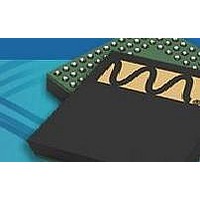WM9090ECS/R Wolfson Microelectronics, WM9090ECS/R Datasheet - Page 38

WM9090ECS/R
Manufacturer Part Number
WM9090ECS/R
Description
Audio CODECs Audio Subsystem w/ capless headphones
Manufacturer
Wolfson Microelectronics
Specifications of WM9090ECS/R
Interface Type
2-Wire, l2C
Thd Plus Noise
80 dB
Ic Function
Ultra Low Power Audio Subsystem
Brief Features
Mono Class D Speaker Driver, Automatic Gain Control (AGC)
Supply Voltage Range
2.7V To 5.5V
Operating Temperature Range
-40°C To +85°C
Rohs Compliant
Yes
Lead Free Status / RoHS Status
Lead free / RoHS Compliant
WM9090
w
Note that a ‘Dummy’ write can be inserted into a control sequence by commanding the sequencer to
write a value of 0 to bit 0 of Register R255 (FFh). This is effectively a write to a non-existent register
location. This can be used in order to create placeholders ready for easy adaptation of the sequence.
For example, a sequence could be defined to power-up a mono signal path from IN1P and IN1N to
headphone, with a ‘dummy’ write included to leave space for easy modification to a stereo signal
path configuration. Dummy writes can also be used in order to implement additional time delays
between register writes. Dummy writes are included in the Headphone Start-Up sequence - see
Table 21.
In summary, the Control Register to be written is set by the WSEQ_ADDR field. The data bits that
are written are determined by a combination of WSEQ_DATA_START, WSEQ_DATA_WIDTH and
WSEQ_DATA. This is illustrated below for an example case of writing to the VMID_RES field within
Register R1 (01h).
In this example, the Start Position is bit 01 (WSEQ_DATA_START = 0001b) and the Data width is 2
bits (WSEQ_DATA_WIDTH = 0001b). With these settings, the Control Write Sequencer would
update the Control Register R1 [2:1] with the contents of WSEQ_DATA [1:0].
Figure 15 Control Write Sequencer Example
DEFAULT SEQUENCES
When the WM9090 is powered up, a number of Control Write Sequences are available through
default settings in both RAM and ROM memory locations. The pre-programmed default settings
comprise a Headphone Start-Up and a Generic Shut-Down sequence.
Note that the start-up sequence does not include audio signal path or gain setting configuration; this
must be implemented prior to scheduling the sequence. Also, the start-up sequence does not include
configuration of the master bias. The user must enable the clock and the master bias by setting
OSC_ENA and VMID_ENA prior to executing the start-up control sequence. These registers may be
reset to 0 after executing the shut-down sequence.
Index addresses 0 to 15 may be programmed to users’ own settings at any time, as described in
“Programming a Sequence”. Users’ own settings remain in memory regardless of WSEQ_ENA, and
are not affected by software resets (i.e. writing to Register R0). However, any non-default sequences
are lost when the device is powered down.
PP, January 2010, Rev 3.0
Pre-Production
38












